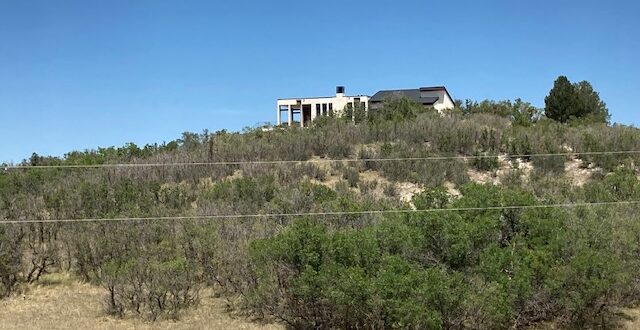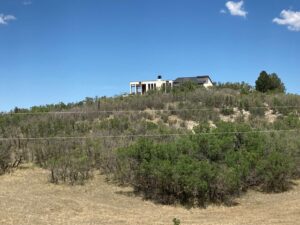Fire Prevention and Mitigation in Zone 3
For questions about fire prevention and mitigation in Zone 3, contact Colorado Mastication at (719)400-9104.
While the first two zones are the most important for your house, if you have property boundaries in Zone 3, you need to know how to protect the land. This is likely if you have more than an acre of land.
Zone 3 is the wildland. Fires that start away from the home will use Zone 3 as a way to build up intensity. You can control that and slow the fires down.
Managing Wildland in Zone 3
In this zone, you’re cutting the tree limbs to between four and six feet from the ground. Preventing the ladder fuel is the best way to slow down the spread of fires. You’ll also want to remove some of the trees that aren’t growing well or are suffering from drought stress, disease, and bug infestations. Keep the larger, healthier trees as much as possible, but do have some younger trees for diversity and help them grow for when the older trees do start to die.
You’ll need to cull some of the larger trees to open up the canopy. You won’t see a difference from the house, and you’ll make the forest healthier for all. You should be able to easily look through the forest when walking around. If you get 20ft before you see a wall of trees, you need to start clearing things.
Spacing Out the Trees
So, how much space do you need between trees? This is going to depend on the tree diameter. You’re working with double to triple the space from inches to feet. Smaller tree diameters will need more space between them.
Here’s a rough chart.
• 4in diameter needs 11ft of space between trees
• 8in diameter needs 15ft of space between trees
• 12in diameter needs 21ft of space
• 16in diameter needs 28ft of space
• 20in diameter needs 35ft of space
• 24in diameter needs 42ft of space
What if the tree diameters of neighboring trees are different? If they’re roughly the same size, you can work with the chart above. If they are vastly different, work with 20ft of space.
Removing Fuel for the Fires
High winds can lead to trees falling down. If this happens, you need to act to mitigate the risk of fire. Remove the fallen trees as soon as you can. The fire on the forest floor will use the fallen trees as fuel. You’ll also need to remove debris from the forest floor.
If you see an infestation of bugs, you need to tackle them right away. Remove the infested trees and prevent the spread of beetles to neighboring trees.
Likewise, remove the dead limbs on trees. There are times that the limbs become unhealthy, but the main tree is fine. Tackling the immediate problem is the best thing. If you remove a whole tree, take out the stump, too.
Colorado Mastication offers the following fire prevention and mitigation services:
- tree removal
- scrub oak clearing
- brush removal
- fence line clearing
- land clearing.

